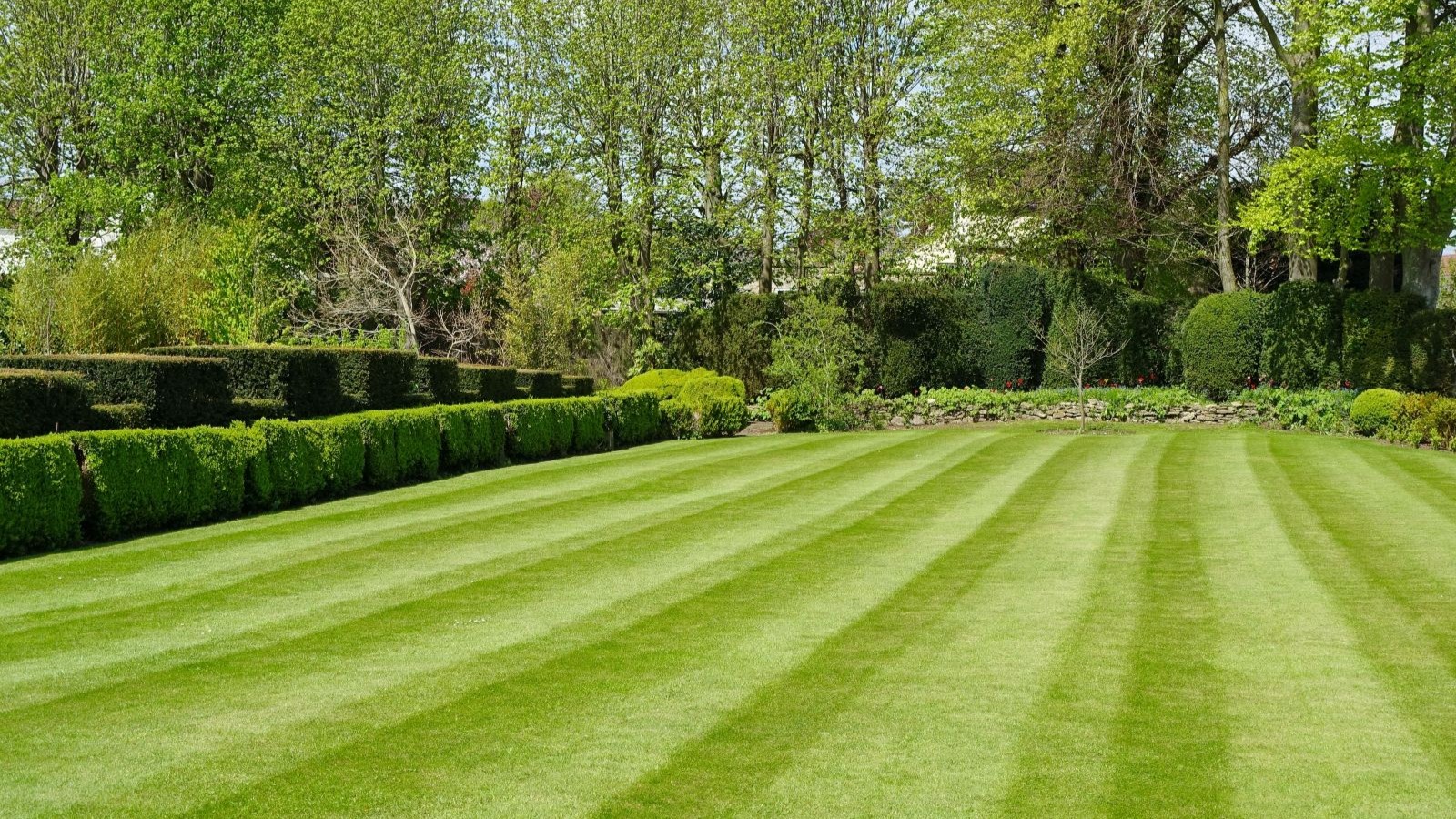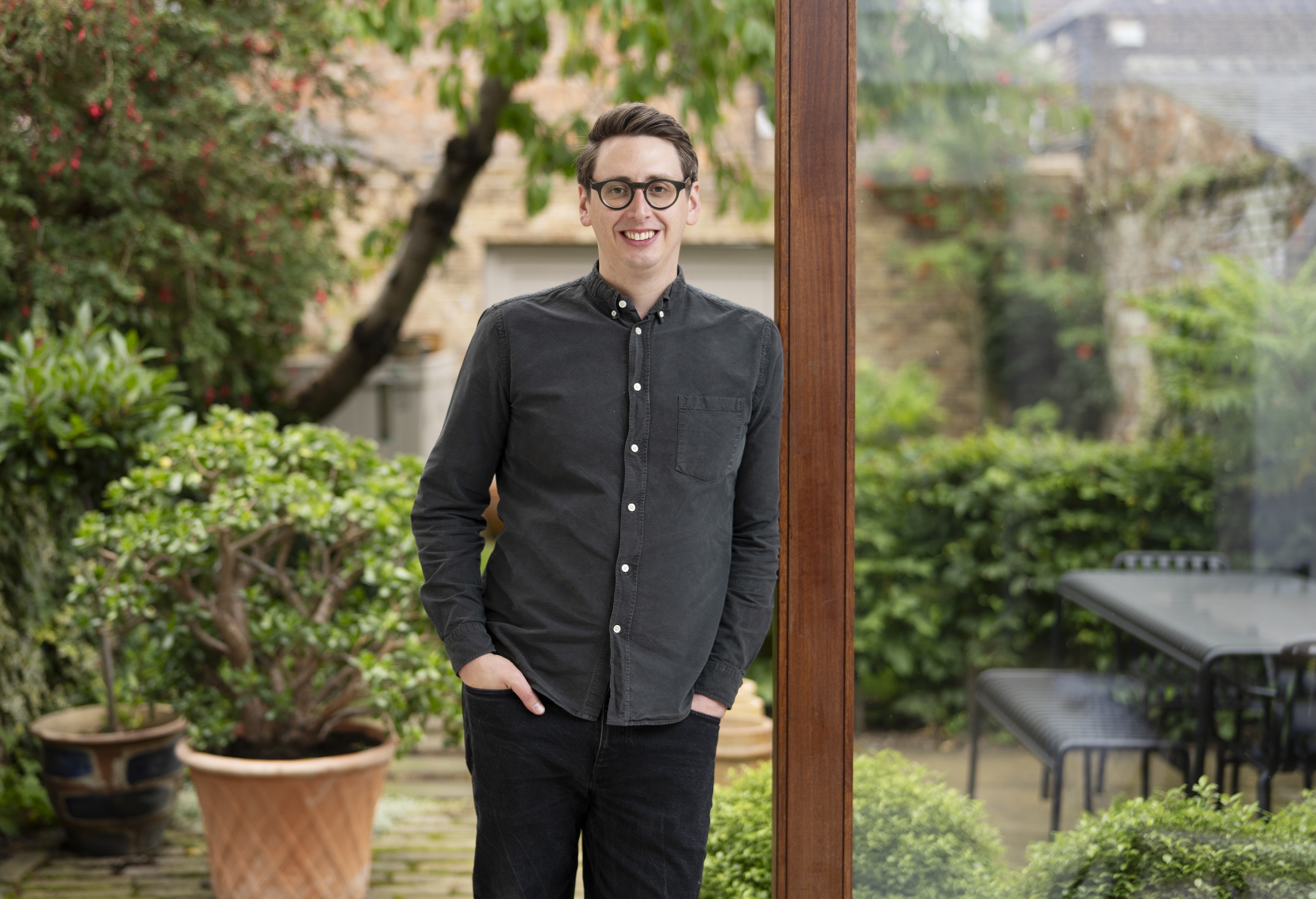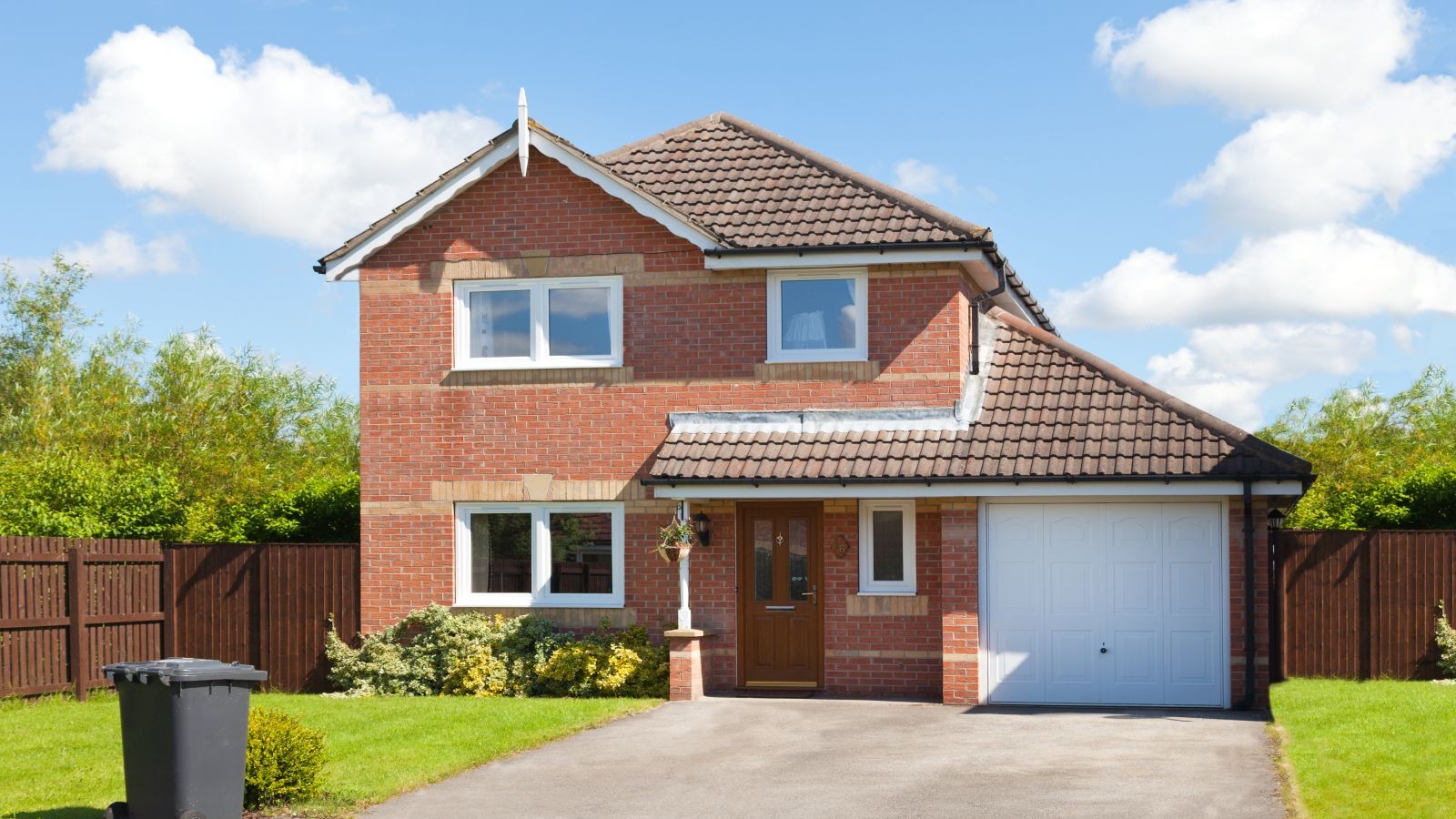How to buy garden land from a neighbour to build your own house
A neighbour selling off their garden can be the ideal solution for a self build plot, but it will come with caveats

When the search for a self build plot seems fruitless and frustrating, have you considered looking closer to home? Buying land off a neighbour with a generous garden is a popular option, when and where it’s possible.
This approach to finding a plot comes with advantages, such as knowing the area, not having to move far – just a matter of metres, so saving money and stress – and you can stay on site to supervise progress.
But, building on a neighbour’s garden is never risk-free. One major challenge is to ensure that your selling neighbours, sometimes called the ‘host’ or ‘donor’ property, are fully aware of the implications of having a new house adjoining what remains of their garden. Issues can arise with other neighbours too who might complain about construction disturbance, and the impact on their own outlook.
Access is important, and there are likely to be legal matters requiring close attention. We asked the experts to share their experience and advice to help the process of buying garden land from a neighbour to go as smoothly as possible.
Why buy garden land from a neighbour?
Buying a garden plot from a neighbour can make sense if you already live there and feel confident enough to build a new house in the neighbourhood. It’s a familiar location, close to friends, social activities, and if you have children, their schools. And you already know the neighbours.
“Buying land from a neighbour has obvious advantages,” says Dominick Brown, director of buying agency Prime Purchase. “So much of buying land to build on boils down to location, and by investing locally in an area that you understand and know well allows for a great degree of comfort.”
“Buying from a neighbour allows you to understand the position fully, as well as having a feel for aspect and local noise and so on. Being close to ‘home’ will ensure you don’t lose local friends and connections by moving out of the area, while if you are building on the plot, you will be close to the works and be able to supervise accordingly.”
It's less risky, Dominick adds, than tracking down and buying a piece of land to build on in what he calls a ‘fringe area’ you’re unfamiliar with: “This will always come with potential concerns over its suitability for a potential building project, as well as questions over its value in the long term.”

Dominick Brown has worked in residential agencies since 1998, starting out in Bristol and then Bath before spending 14 years working in, and running, the Savills office in Sevenoaks. He has brokered countless deals in Kent and East Sussex, earning a well-deserved reputation as a knowledgeable property adviser worth having in your corner.
Does the garden plot have potential?
When it comes to assessing if a plot has potential and feasible to build a home on, take it one step at a time. The first thing is to check there are no local planning restrictions preventing what is sometimes called ‘garden grabbing’. If it is the case, forget the notion, and keep looking for land elsewhere.
“When assessing a garden plot, there are several key considerations,” says George Musson, who, as founder and director at Musson Brown Architects in Newcastle, has worked on several ‘garden plot’ projects. “As it’s the one thing you cannot change, location should be the first thing you assess. Look at the neighbouring properties - will your home be a private, secluded living space, or will you need a complex design solution to avoid being overlooked?”
The size of the plot needs to be carefully measured and planned out roughly before you part with any cash; when the home you’re hoping for is finished, will you be left with a sufficient garden yourself?
“Compromising on green space may mean losing the natural beauty that led you to fall in love with a plot in the first place, while also diminishing the value of the finished product,” says George.
There are also practical factors to take into account, top of the list being the likelihood of your development achieving planning permission, as mentioned above. This will depend heavily on whether the principle of the development is supported by the local council, George says, so it is worth exploring this as early as possible, ideally through an informal chat or meeting with a planning officer, if possible. Once you have a clearer idea of your scheme, you can obtain more formal pre-application advice from the planning officer, usually for a fee, typically between £50-£500 depending on location and complexity of project.
There may be restrictions, not just on size, but style and materials used, the number of windows, shape of the roof and myriad other design elements. Be aware that the house you’re imagining might not be possible under local planning rules.
“Also, consider whether there are services such as gas, electricity and water on or near the site,” says George. “These connections are your responsibility to establish and the process of doing so can cost tens of thousands of pounds – sometimes more.”


A Newcastle University graduate and registered architect, George Musson co-founded Musson Brown Architects with his wife, Victoria Brown, in 2021 to deliver end-to-end architectural services to clients nationally.
George navigates the planning and design stages of every client project. He is passionate about creating beautiful yet robust spaces that blend seamlessly with his clients’ lifestyles. His specialisms include listed buildings, commercial developments and sustainable homes.
Will you get planning permission?
Before you fall in love with the idea of building on your neighbour’s back garden, you’ll need to conduct a thorough scoping out of the site. It is highly advisable to get a planning consultant – seek recommendations, ask for references and always follow up – on board as their professional advice will be invaluable and can potentially save you thousands.
“Above all, you’ll need to establish the likelihood of obtaining planning permission to build a new house on this plot,” says Ruth Gunton, associate planner at Cheffins, who shares a handy checklist of things to research yourself:
- If you’re in a village, is the potential dwelling inside or outside the village’s development envelope? Are there any greenbelt planning loopholes if it is?
- Is the host dwelling listed or in a conservation area, as these factors will have implications on future development?
- Will you require an ecology survey, necessary if the plot is home to endangered species and/or plants?
- What is the tree coverage like, and are any trees subject to a Tree Preservation Order (TPO) making cutting down trees difficult to carry out without written consent from the local planning authority?
- And are there any existing structures on the plot that need demolition, or have potential for conversion?
“All of the above mean that it’s always best to get a planning consultant to review and advise on the planning constraints and compliance with policy,” Ruth says.
Before you decide to buy, it’s also worth taking legal advice, Ruth adds: “Looking back at any previous planning decisions and legal documents will give a good understanding of whether there are any restrictions, such as covenants [which might restrict development of the land), overages (also known as a ‘clawback’, an agreement that allows a seller to receive additional money from a buyer in the future], or Section 106 orders (which might mean payment from yourself, as a developer, towards local infrastructure), on dividing the plot.”

Ruth is an associate planner at East of England estate agency Cheffins and a Chartered Member of the Royal Town Planning institute, with 10 years of experience in the public and private sector. Ruth manages all types of applications and development advice, and especially enjoys residential and rural opportunities.
Will you have access to the plot?
When it comes to garden plots, access is crucial. Not only will you need to think about logistics for the heavy machinery you’ll need during construction, you’ll also need to enquire about accommodating a permanent driveway.
“Consider, will this be shared with your neighbour, or will you be creating a separate, personal driveway?,” advises George Musson. “If the former is the case, enquire about maintenance and upkeep responsibilities – will ownership of the driveway be shared, or will you be granted a right of access only? If it’s the latter, be sure to confirm you have sufficient room to accommodate a decent one.”
There are likely to be local planning authority rules on the allowed length and width of a driveway, so look these up and take them into account.

Have you checked the legalities?
Exploring the legalities of a land purchase can feel like a daunting task. Seeking the right legal support to navigate this process is essential, and there are some important things to look out for along the way.
“Start by ensuring the land boundaries are clearly defined and checking for any disputes or restrictions,” says George Musson. “Assess the surrounding area, identifying whether this is likely to be developed in future and if this would impact your enjoyment of the plot.
“Finally, ensure expectations with the current landowners – your neighbours – are clear from the outset. By maintaining a good line of communication with the selling neighbour, you can avoid disappointments and disputes later down the line.
"You might consider including clauses in any contracts that prevent the selling neighbour from objecting to your planning application – this could save you some costly delays.”
What factors will influence the price you’ll pay?
When it comes to the price you should – and are willing to – pay to buy your neighbour’s garden land, it can be tricky to come up with a direct calculation as there are often no specific comparable to help set the figure. This means that unless another neighbour has recently sold garden land, you’re working in the dark. So where to start?
“Your building plot cost will be whatever you both think is reasonable, which will take into account different factors from both sides, both tangible and intangible,” says Ruth Gunton. “Your neighbour might think about the value that would be gained through achieving planning permission on the land and the loss of value to their property. However, you might take into account the risk of being refused planning permission and the application costs.”
Other factors include how your neighbours will feel with a potential new house next door; increased noise or reduction of privacy, for example. They will be seriously considering whether selling is really worth their while, so perhaps don’t expect a quick decision; patience is vital, and remember your new home will impact their own home forever. “In the end, discussion and negotiation between both parties is the best way forward,” says Ruth.
Once you've agreed a price, it's also worth factoring in the stamp duty on your building plot you might need to pay too.

What drawbacks are there for buying garden land from a neighbour?
Until you’ve secured the plot, the new house has achieved planning permission, construction is finished and you and the owners of the ‘host’ property are happy with the end result, prepare for some anxiety, warns Ruth Gunton: “Even broaching the subject of buying their garden land and them saying no could be irksome.”
Unless you live in a remote rural spot, with no other people nearby, once you have agreed terms with the selling neighbour, you’ll likely be thinking of the owners of other surrounding houses too.
It’s a good idea to broach the subject with the nearest neighbours before you agree to part with any money, or start making plans. If you meet with serious objections, it might be the sign to re-think.
Whilst some neighbours might see potential in their own back gardens, others might be worried that your purchase will set a precedent, leading to – potentially – a sharp increase in the number of local properties, with the effect on traffic and general peace and quiet to worry about.
“Building in gardens or in ‘back’ land can cause alarm to neighbours and the local community,” says Dominick Brown. “No one wants their views interrupted and spoilt by new houses being built behind, or close to them, while the noise and disruption during construction works can be considerable.”
However, once the dust has – literally – settled, should you or your neighbours wish to sell in future, there won’t be too much impact made by your new house in the neighbourhood, Dominick believes: “From a re-sale perspective I always feel it doesn’t cause too much of a concern as buyers will only know the site as it looks to them. Equally, neighbours soon come round to understanding that such schemes can underpin value as well as provide possible opportunities within their gardens for development themselves.”
Buying garden land from a neighbour can be the answer to a self builder’s prayer, but prepare to practise your diplomacy skills and put in the practical and legal groundwork before you approach anyone. And, if you've never built before, make sure you understand exactly what's involved in a self build before you take the leap.
Get the Homebuilding & Renovating Newsletter
Bring your dream home to life with expert advice, how to guides and design inspiration. Sign up for our newsletter and get two free tickets to a Homebuilding & Renovating Show near you.
